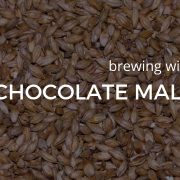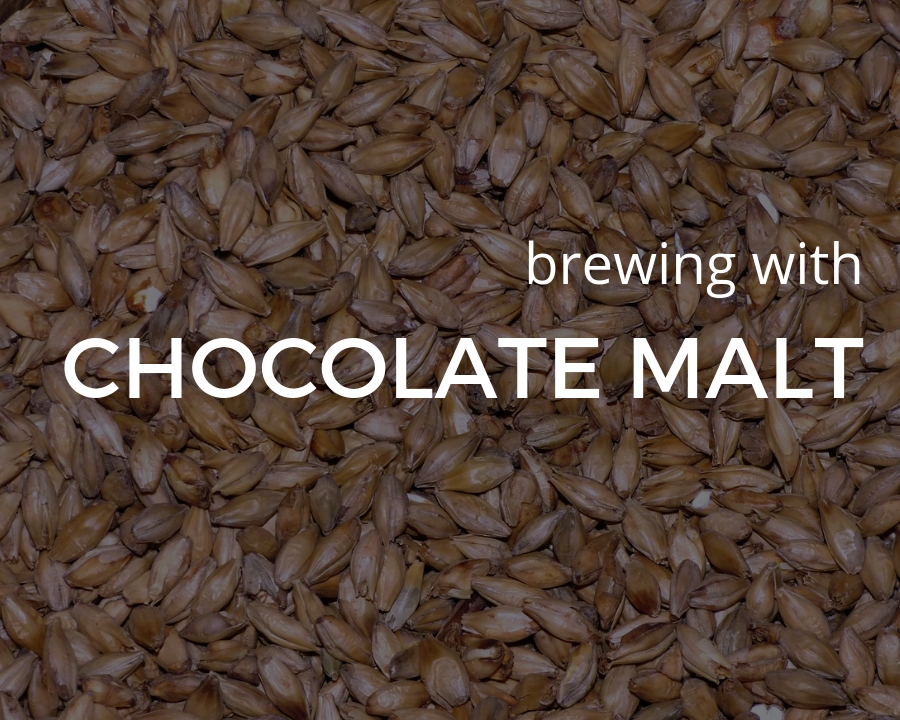Chocolate Malt – Brewing With Chocolate Malt
The name chocolate malt gives away a few clues about this dark highly kilned malt. Chocolate malt is a classic choice of malt for getting the colour and flavour that we want in porters although is it the best malt to get a chocolate tasting beer. In this article, we will take a look at how chocolate malt is made and how to brew with it.
Table of Contents
The “Chocolate” in Chocolate Malt
Depending on where you are in the world the chocolate malt available to you may be different. Different manufacturers or maltsters produce different colours of chocolate malt so the chocolate malt produced in the UK, for example, has a darker roast and is, therefore, a lot darker in a beer than chocolate malts from US maltsters.
The name chocolate malt refers not only to the flavour profile but also to the colour. Just as with chocolate for eating, chocolate malt also come in a spectrum of light to dark varieties.
Below is a selection of some of the chocolate malts available from different maltsters:
| Maltster | Variety | Colour (Lovibond) |
|---|---|---|
| Crisp | Chocolate | 425 – 475 |
| Simpsons | Chocolate | 375 – 450 |
| Dingeman | Chocolate | 300 – 380 |
| Baird | Chocolate | 450 – 500 |
| Breiss | Chocolate | 350 |
| Breiss | Dark Chocolate | 420 |
| Thomas Fawcett | Chocolate | 325-400 |
| Thomas Fawcett | Pale Chocolate | 185 – 250 |
As you can see in the table there is a wide degree of colours and therefore flavours of chocolate malt. This means choosing one is not just a case of saying chocolate malt but rather the type as well as the impact on the finished beer could be a mild, light chocolate flavour or a dark roasted bitterness.
How Chocolate Malt Is Made
Chocolate malt is most often made with pale malt which could be two-row or six-row and then roasted for a period of time to achieve the desired colour of the chocolate malt being produced. The roasting temperature is around 230C and the duration of around 1.5 to 2.5 hours depending on the final colour.
The longer the roast the darker the chocolate malt and this will, of course, vary the flavour profile with the darker chocolate malts having a more intense roasted flavour just as you would find with darker chocolates.
Barley, Wheat & Rye Chocolate Malt
Not only is chocolate malt made with barley as is most common with other roasted grains, wheat and rye also have chocolate variations that are useful for various recipes and bring something unique. Rye has a spicy quality to it and the darker chocolate wheat malt is fairly roasty,
Typical Usage
Chocolate malt is predominately a big flavoured malt and is used as such. Whilst it can be used in small amounts to adjust the colour of a beer, black malt is more suited to this task.
Beer Styles
Chocolate malts are most closely associated with brewing porters but that is not the only use for this malt. Any beer requiring darker colour an subtle chocolate notes can benefit from its use. Beers such as:
- Porter
- Stouts
- Mild
- Brown Ale
- Scotch Ales
- Dark Lagers
Chocolate Malt Percentage of the Grain bill
Typically 0 – 10%
Chocolate malt usage can range from just 1-2% of the grain bill to introduce a subtle background hint of chocolate to a more robust use of up to 10% which will bring dark, roasted and bitter coffee notes to the beer.
Can You Get A Chocolate Flavour From Using Chocolate Malt?
Whilst it is called chocolate malt, this primarily refers to the colour of the malt. If you are looking to get a milk chocolate flavour running through the beer then adding chocolate malt to the grain bill is a good idea, however, you need sweetness.
To get that sweet chocolate milkshake quality to a beer you need to add sweetness which the chocolate malt alone does not provide.
A balance of crystal malts and chocolate malt used together is the best way to achieve a milk chocolate like flavour into your beer





Leave a Reply
Want to join the discussion?Feel free to contribute!